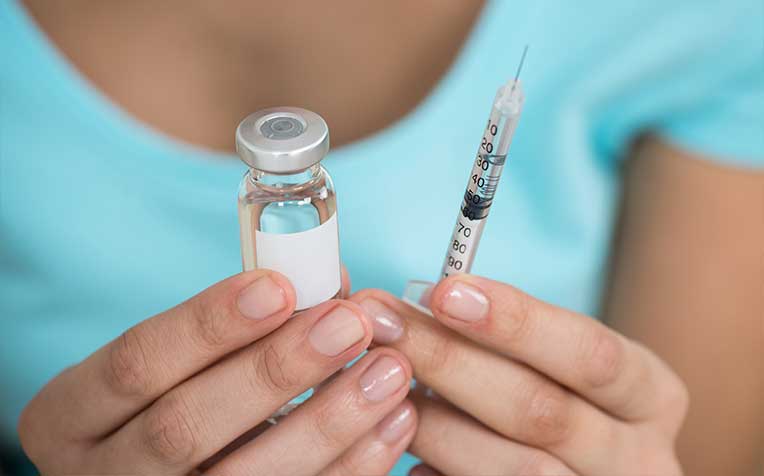HealthXchange will NEVER ask you to transfer money over a call. If in doubt, call the 24/7 ScamShield helpline at 1799, or visit the ScamShield website at www.scamshield.gov.sg.

Insulin should be injected into the fatty layer under the skin.
It is important to rotate your insulin injection sites in order to prevent lumps and hardened tissue from developing.
"Injecting into lumps or hardened tissue will affect the absorption of insulin and make it less effective," says Dr Daphne Su-Lyn Gardner, Consultant, Department of Endocrinology, Singapore General Hospital, a member of the SingHealth group.
Inject insulin into the fatty layer under your skin
- Insulin needs to be injected into the fatty layer beneath the skin and not into the muscle below the fatty layer as muscle absorbs insulin too quickly.
- Insulin is absorbed quickest and most consistently from the abdomen, followed by the arms, the thighs, and the buttocks.
Move 2 fingers along from your last insulin injection site
- Rotate injection sites by moving 2 fingers’ breadth along from your last injection site until you have used an entire area.
- Move to a new injection area every week or two (see figure below)

Insulin injection sites
Best spots on your upper arm and thigh to inject insulin

- If you inject in the upper arm, use only the outer back area (where there is more fat) and use a shorter needle.
- If you inject in the thigh, use a shorter needle and avoid using the inner thighs.
Areas to avoid
- Do not inject close to the navel, as insulin absorption will not be as consistent.
- Also do not inject close to moles, scars, or hardened areas.
- Do not inject in an area that will be exercised soon. Exercising increases blood flow, which causes insulin to be absorbed at a rate that is faster than usual.
Choose your needle well
- You can reduce the pain of injection by choosing a needle length and gauge that is right for you.
- Use a new needle with each injection.
Ref: O17
Contributed by
Related Articles
Conditions & Treatments
Public Events
Get the Health Buddy App
© 2025 SingHealth Group. All Rights Reserved.


















 Get it on Google Play
Get it on Google Play